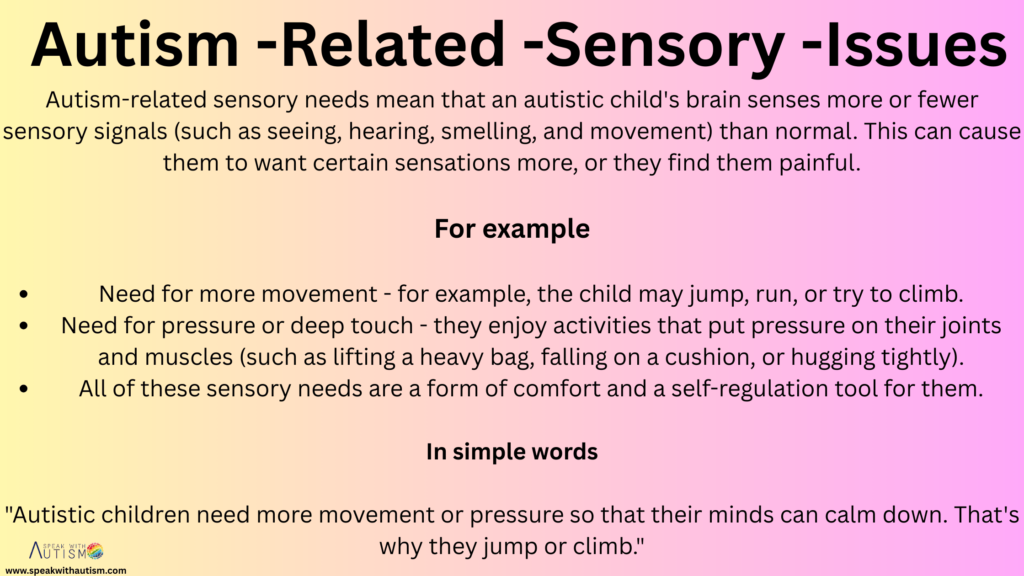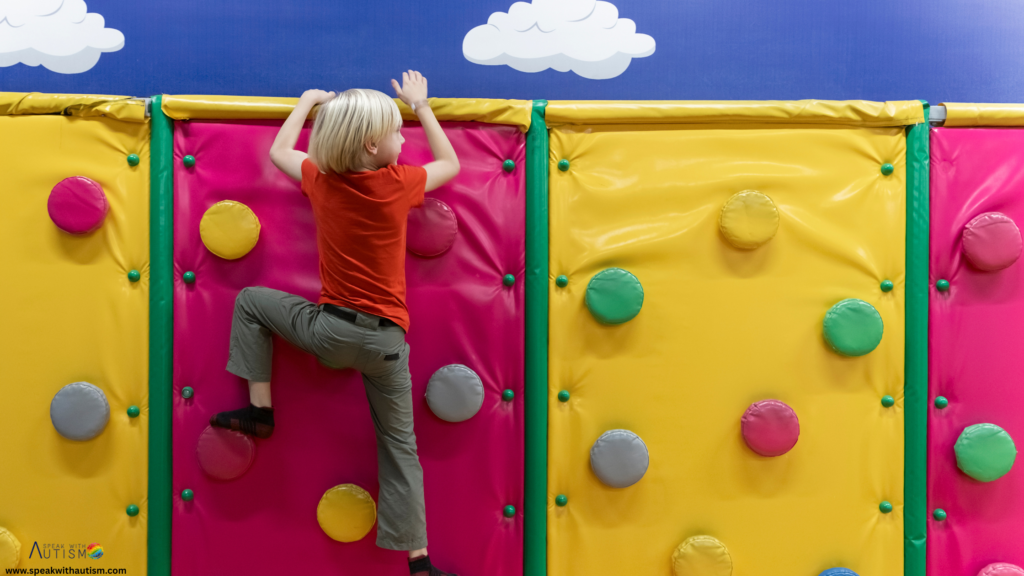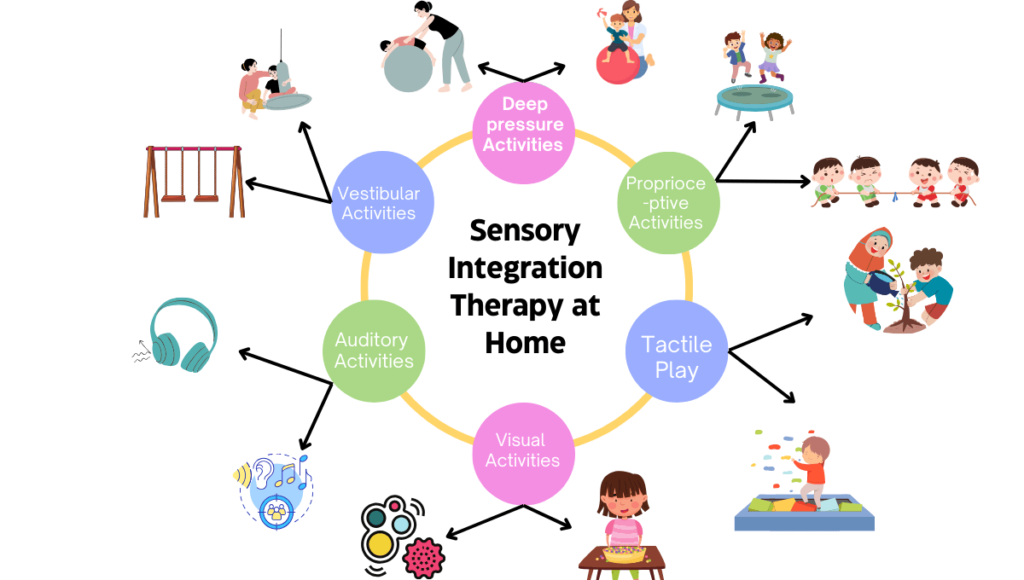Risky Climbing Behavior: If you’re a parent of an autistic child who climbs and jumps from high places without hesitation, you’re not alone, and your concern is completely valid.
It’s nerve-wracking to see your child scaling furniture, jumping from heights, or climbing dangerous spots without understanding the risk. For many parents, this behavior feels unmanageable and scary. But the good news is: there are ways to guide it safely.
Table of Contents
Let’s explore why autistic children might be drawn to climbing and jumping—and what you can do to keep them safe while supporting their needs.
🧠Why Does My Child Climb and Jump So Much?
Many autistic children engage in climbing because it fulfills a sensory need. The sensation of pressure, movement, or elevation helps them self-regulate. They may not understand the danger or may not perceive it the way neurotypical children do.
At around 5 years old, a child is full of curiosity and energy. Combine that with autism-related sensory needs, and the urge to climb or jump becomes even stronger.

✅ Practical Tips to Keep Your Child Safe
Here are some parent-tested strategies that may help:
1. Create Safe Climbing Opportunities
If your child is going to climb anyway, why not give them a safer space to do it?
- Set up a small indoor climbing wall or jungle gym.
- Stack cushions or mattresses to create a soft climbing area.
- Invest in a Pikler triangle or wooden climbing frame, especially if you have some open space.

These outlets provide a safe way for your child to meet their sensory needs without unnecessary risk.
2. Set Clear, Consistent Boundaries
Use simple language your child understands. For example:
“Chairs are for sitting, not climbing.”
If your child responds well to visuals, show a picture of a chair with a red. Remember: repetition is key. You might have to say it many times before it sticks, and that’s okay.
3. Offer Sensory Alternatives

Jumping and climbing may help your child feel grounded. Try giving them safe alternatives for sensory input:
- Let them carry a backpack with books in it.
- Have them push a laundry basket around the house.
- Provide stress balls or resistance putty to squeeze.
These “heavy work” activities can fulfill the same need without danger.
4. Supervise Closely and Redirect Calmly
Since your child might not fear heights, close supervision is essential around risky areas like stairs, balconies, or tall furniture.
If they start climbing something unsafe, redirect them gently without overreacting. Sometimes a big reaction can reinforce the behavior (because it gets your attention). Stay calm and guide them towards something safer.
5. Burn Energy in Other Ways

Your child may have more energy than they know what to do with. Give them ways to burn it off safely:
- Daily outdoor walks or playtime
- Trampoline bouncing
- Swinging at the park or in your backyard
These activities offer movement, stimulation, and fun—all while reducing the urge to climb furniture indoors.
6. Set Up Home Safety Precautions
Until your child learns to avoid unsafe climbing, take steps to minimize injury:
- Pad sharp corners and edges.
- Anchor heavy furniture to the wall.
- Lock windows and block access to high-risk areas.
These precautions give you peace of mind while you work on the behavior.
7. Consult an Occupational Therapist
If the behavior feels overwhelming or dangerous, it’s okay to ask for help.
Occupational Therapists (OTs) specialize in helping children with autism manage sensory behaviors safely. An OT can create a customized plan based on your child’s specific needs.
👀 Watch for Patterns and Triggers
Start observing your child’s climbing patterns:
- Do they climb more when they’re bored?
- Is it worse at certain times of the day?
- Does it happen after screen time or loud environments?
Understanding when and why the behavior happens can help you manage it more effectively.
💬 Final Thoughts
You’re not a bad parent. You’re doing your best—and your child isn’t trying to be difficult. They’re simply trying to meet a need in the only way they know how.
With patience, safety strategies, and the right support, you can help your child thrive while keeping them safe.
If this article helped you, consider sharing it with other parents who might be going through the same thing.
Frequently Asked Questions: Risky Climbing Behavior and Jumping Behavior
Is my autistic child’s repeated jumping a behavioral issue or a sensory need?
In most cases it is sensory seeking behavior—not a behavior problem. Jumping can be a way for them to regulate their bodies. This movement gives them comfort and balance, especially when their nervous system is overstimulated or under-stimulated.
The child does not understand that jumping from a high place is dangerous. How to explain?
It can take time for autistic children to develop an understanding of danger. You can repeatedly teach them simple rules, such as:
“Jumping only happens on the trampoline.”
Also use visual supports (such as a red cross on unsafe areas) and positive reinforcement when they demonstrate safe behavior.
My child has a strong climbing obsession. Does it ever go away?
This obsession can be a phase or a permanent part of the sensory need. However, good sensory alternatives and appropriate OT intervention can decrease both the frequency and intensity of the behavior. As they grow and get better self-regulation tools, this need can shift.
Is it okay to buy a trampoline? That can be risky too, right?
Trampolines can be safe in a controlled environment, especially if you use a net enclosure and padding. This is an excellent sensory outlet for children, but supervision is important. Mini trampolines are also a safe option for indoor use.
Will occupational therapy help control climbing behavior?
Absolutely! Occupational Therapists (OTs) are specially trained to identify why a child is climbing and suggest safe alternatives. They will create a personalized sensory plan for your child that is safe and meets their sensory needs.
